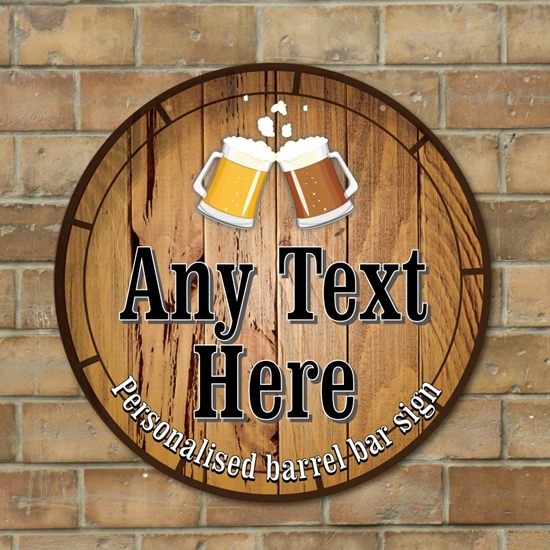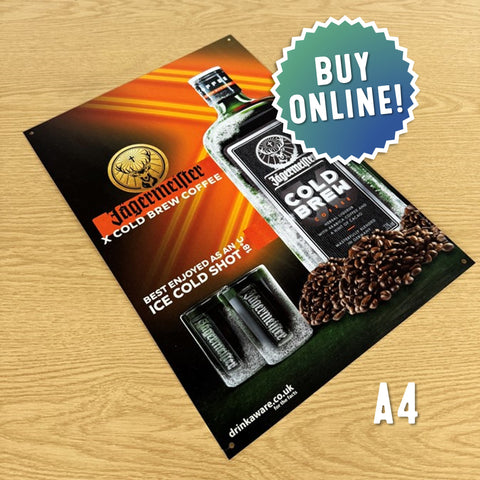Good Advice To Deciding On Gin Bar Signs
Wiki Article
How Do Bar Signs Differ In Relation To Location?
Location, design and location of bar signs are tailored to maximize effectiveness in certain locations. Here is a brief overview of how bar signs differ depending on the area they're placed: Exterior Signs
Goal: To create the bar and to draw in patrons.
Highlights: Big, attractive, often illuminated for visibility at night.
Material: Materials such as neon, metals, and weather-resistant vinyl.
Examples of these are: Name signs for main bars, logo signs, and marquee signs above the entrance.
2. Entrance Signs
Purpose: To welcome patrons and provide them with initial details.
Often with branding elements These features are usually easy to understand and enticing.
Materials: Wood, steel, or signs with lights.
Examples are "Welcome Signs" as well as operating hours and special announcements.
3. Interior wall signs
The purpose of this site is to provide information, enhance the decor and create a welcoming the right atmosphere.
Features: Various in size and design to fit with interior decor.
Materials: Wood, metal, chalkboard, acrylic.
Some examples: Menu boards, inspirational quotes and thematic decor signage.
4. Behind the Bar Signs
Include important information like the bar name, signature drink or any specials.
Highlights: Brightly lit and well-lit, it serves as a focal point.
Materials: LED, neon digital display, chalkboard or any other materials.
Examples include bar name signs and drink specials boards and menus that are digitally displayed.
5. Signs for the ceiling and hanging
Purpose: To enhance décor or to provide directions from above.
Suspended in the ceiling and accessible from various angles.
Materials: Lightweight, light materials like metal, foam board or acrylic.
Example: Hanging decorative signs, themed props, and direction arrows.
6. Tabletop Signs
Objective: To provide information about the restaurant for customers who are at tables.
Features: The font is small and easy to read up close.
Materials: Acrylic, wood, laminated paper.
Examples: Drink Menus Table Numbers, Promotional Cards and QR Code Stands.
7. Restroom Signs
Objective: To clearly display the toilet's location.
Specifications: Highly visible, usually with clear texts and symbols.
Materials: Metal, plastic, wood.
Examples: Signs for bathrooms for men and women.
8. Directional signs
The purpose of this is to guide customers to different areas of the bar.
Features clear arrows and labels easy to read.
Materials: Metal, acrylic, wood.
Examples: Signs pointing out bathrooms, exits, and the various seating places.
9. Window Signs
The objective of a poster is to draw the attention of passers-by and inform them about your establishment.
Highlights: Often seen from the outside, and often incorporate lighting.
Materials: Vinyl decals, neon, LED.
Example: Signs promoting events, hours of operation and advertising signage.
10. Event and Promotion Signs
Purpose : To inform customers of seasonal or exclusive offers, events, or promotions.
Highlights: Attractive and often temporary.
Materials: Foamboard, vinyl, and chalkboard.
Examples include event posters, banners for promotion, and chalkboard-themed specials.
Specific Location Considerations
Visibility
The signage for the entrance and exterior Signs should be seen from afar in order to attract potential customers.
Interior and Behind the Bar Signs Need to be strategically placed to maximize Impact and Readability.
Durability
Exterior Signs - Materials should be weatherproof in order to withstand outdoor conditions.
Interior Signs: They may be constructed from a greater selection of materials as they are shielded from the elements.
Aesthetic Inclusion
Signs for decorative and behind-the-bar: They should complement the interior theme and design of the bar.
Directional and Informational Signs: Must be functional, but still blend with the decor.
Functionality
Signs for Directions and Restrooms Signs for Directions and Restrooms easily readable and clearly displayed to ensure that patrons are able to find their way around the location.
Promotional and Event Signs: Should be changeable or temporary in order to reflect current options.
Lighting
Window and exterior signs: Often illuminated to enhance visibility at night.
Interior as well as Behind Bar Signs for the bar and inside. Make use of lighting to draw attention to areas or create a mood.
Through adjusting their style, materials and placement Bar owners can use their creativity to enhance both the function as well as the aesthetic appeal of their establishments. They also can create an inviting, unified atmosphere for their customers. View the top rated window vinyl for more advice including design your own bar sign, personalised pub signs for garden, personalised home pub sign, bar sign design, pub signs for home bars, small pub signs, bar signs, the staying inn bar sign, bar hanging sign, hanging pub signs for garden and more.

How Do Bar Signs Differ In Terms Lighting?
Lighting of bar signs can influence their visibility, ambiance and their overall impact. The lighting changes can have a huge impact on the bar's signage. Neon Signs
Characteristics: Bright, colorful, classic.
Lighting: Utilizes neon-filled gas tubes that produce illumination when they are electrically charged.
Uses : Perfect for creating an aged, retro-style look. It is used for logos and bar names.
The nostalgic appeal and high visibility make this a great choice.
It's fragile and repairs are costly.
2. LED Signs
Characteristics: Energy-efficient, versatile, modern.
Lighting: LEDs emit an intense, bright light.
Uses : Outdoor and indoor signs can be used and a programmable display and dynamic lighting effects.
Advantages: Long-lasting, energy-efficient and programmable for animations or color changes.
Negatives: It can be costly at first, but it can be a great savings on energy and maintenance costs.
3. Backlit signs
Characteristics: Elegant, sophisticated, subtle.
Lighting: A transparent surface is illuminated with fluoro or LED lights to create an ethereal light.
Examples include modern menu boards and bar signs.
Benefits: Improves the reading ability of small print in dim lighting conditions.
Benefits: Less complicated installation, however higher initial cost.
4. Signs using Edge-Lit
Characteristics: Sleek, contemporary, stylish.
Lighting: Illuminates edges of an acrylic panel (usually acrylic) with LEDs.
Uses: Suitable for contemporary minimalist designs, commonly used for directional or informational signs.
Advantages Creates a sophisticated and distinctive look.
Advantages: Restricted to certain styles of designs.
5. Ambient/Accent Lighting
Characteristics: Subtle, atmospheric, decorative.
Lighting: Utilizes indirect sources of light to highlight and accentuate the signage.
Uses: Improves the atmosphere and is commonly used to highlight artwork or theme-related decor.
Benefits: Creates a cosy and inviting ambience.
The direct light provided might not be sufficient for a clear reading.
6. Marquee signs
Characteristics: Bold, theatrical, eye-catching.
Lighting Lights: Multiple light bulbs or LEDs are utilized around the edges of the sign.
Signs used for exterior use include occasions, creating vintage film appearances, and event promotional.
Advantages: Attractive and visible.
Some disadvantages include high costs and regular maintenance.
7. Projection Signs
Characteristics: Dynamic, innovative, versatile.
Lighting: Uses projectors to project light and images onto a surface.
Uses for: Promotions and events, dynamic displays and temporary promotions.
Advantages: Easy to change and no sign structure is required.
Advantages
8. Fluorescent Signs
Characteristics: Bright, cost-effective, traditional.
Lighting: Uses fluorescent tube to provide illumination.
Usage: Most often used for large outdoor and indoor signs.
Benefits: Bright, efficient and affordable for large-scale signs.
Advantages
Lighting Things to Consider
Visibility
Neon and LED signs: They are perfect for grabbing the attention of people at a distance, especially when it's dark.
Backlit and edge-lit signs improve readability and give a polished appearance.
Energy Efficiency
LED Signs: High-energy efficient. Lasting for a long time.
Fluorescent and neon Signs: more energy efficient, while neon is more delicate.
Aesthetic Appeal
Neon signs and marquees are perfect for vintage and retro aesthetics.
The perfect choice for modern and clean designs are signs that have an edge lit with backlighting.
Ambient lighting: It improves the atmosphere and ambience.
Maintenance
LED Signs: Durable and low-maintenance.
Neon and fluorescent signs: Require more frequent maintenance and potential repairs.
Cost
LED Backlit Signs - Higher initial costs, but less ongoing costs
Fluorescent Signs: Lower initial cost but higher long-term energy costs.
Flexibility
Projection LED Signs and Programmable LED Signs Provide flexibility and high-dynamic content for displays.
Traditional Signs: They are less flexible however, they often have a desired look.
Select the appropriate type of lighting for your bar signs to increase visibility, create a welcoming ambience, and effectively convey your brand and promotions. Have a look at the most popular bar hanging sign for more tips including personalised hanging bar sign, personalised pub, personalised outdoor bar signs, pub sign design ideas, home garden bar signs, the staying inn bar sign, outdoor home bar signs, personalised pub, make a bar sign, personalised sign for bar and more.

What Distinguishes Bar Signs From One Another In Terms Of Interactivity?
The bar sign's interactivity can vary to attract customers and enhance the customer experience. Interactivity for bar signs is distinct. Static Signs
Static signs provide information in a static format.
Common Types include: Printed posters or painted murals.
2. Digital Displays
Digital signs offer real-time updates and animations along with multimedia content.
Touchscreen displays are interactive and can show promotional material, games menus or other content.
Benefits Include: Attract attention to dynamic information while encouraging patron engagement.
3. QR Codes
Interactive Links QR codes that are displayed on signs can open menus as well as social media profiles and promotions.
Benefits: Easily access to information about promotions, other offers or loyalty program.
4. LED Screens
LED screens can show animated text, videos, and animations.
Interactivity: LED screens let patrons interact, for example through menu selection or playing games.
Benefits: Attract attention, convey information clearly and provide an immersive experience.
5. Projection Mapping
Immersive experiences Projection mapping converts flat surfaces into interactive displays that feature interactive visuals.
Interactivity: The patrons can interact with interactive elements such as games or virtual experiences.
Benefits: Improve the ambience and encourage social interactions.
6. Augmented Reality
AR enhances the real world by overlaying digital media onto the physical world. This creates immersive experiences.
The sign that is AR-enabled allows users to interact with digital components such as a cocktail recipe, or playing virtual games.
Benefits: Stand out from others by offering distinct experiences that are engaging for patrons and creating a buzz.
7. Motion Sensors
Motion sensors sense movement and cause interactive signage to be activated.
Interactivity: Signs that react to the movement of the patron can display animations, change content or provide specific messages.
Benefits Enhance engagement, design immersive settings, and surprise clients.
8. Social Media Integration
Online Interaction: Signs that include hashtags, or handles for social media could inspire customers to engage online.
User-generated Material: Inspire patrons on social media to post pictures of bar signs expanding their reach and visibility.
Benefits: Increase community involvement, increase brand recognition, and produce content that is created by users.
9. Interactive Lighting
Dynamic Effects LED or Neon Signs with Interactive Lighting are able to respond to Sound, Touch, or motion.
Signs that are interactive change their brightness, color and patterns according to patron interactions or environmental clues.
Benefits Create a sense of depth and enhance ambiance. Draw attention.
10. Gamification
Interactive Games: Displays that include interactive games and challenges that keep customers entertained and encourage participation.
Offer freebies and discounts to encourage players to complete challenges and even win games.
Benefits: Increase dwell times increase social interaction, and encourage frequent visits.
By incorporating interactive features in signage, bar owners can create engaging, memorable experiences for patrons. They will also increase the visibility of their brand and differentiate their establishments from others in a crowded marketplace. Check out the top rated see page on bar signs for site advice including signs for garden bar, bar signs for garden, personalised outdoor bar signs, bar sign hanging, personalised home pub sign, the pub sign, large personalised bar signs, personalised home bar signs, bar signs for home, personalised pub signs and more.
